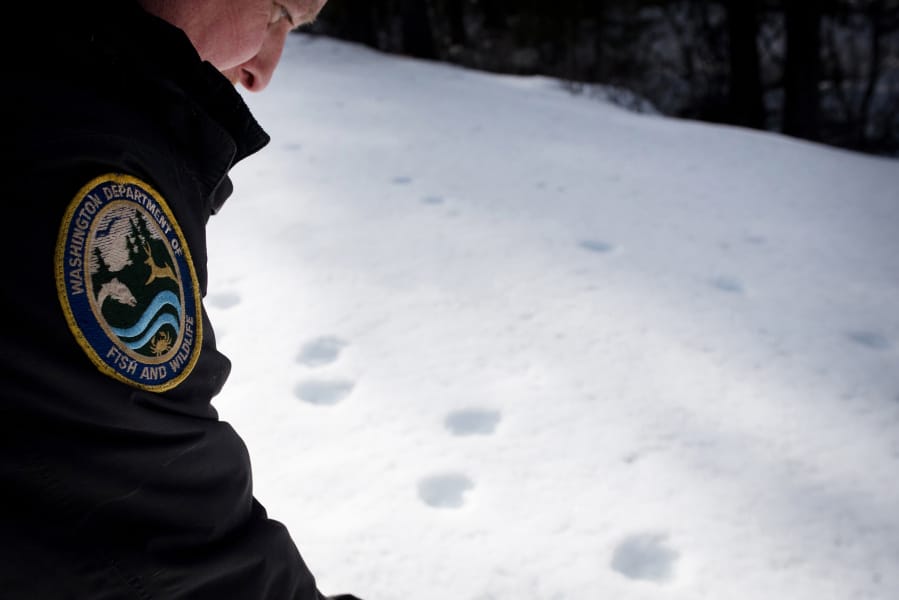SPOKANE — How do you count one of the world’s more elusive ground animals?
Very carefully.
That’s one of the messages from a Washington Department of Fish and Wildlife video released recently called “How to Count a Wolf.”
The video, which was produced by Benjamin Drummond and Sara Joy Steele in conjunction with WDFW, explains how WDFW estimates the number of wolves in the Evergreen State.
Part of that process is done from the air, using helicopters to find, sedate and collar wolves. It’s dangerous work and the stress is palpable in the eight-minute video.
“We’re flying 10 feet off the ground, 30 miles an hour around trees,” Trent Roussin, a state wolf biologist, says in the video. “Just to get a chance at maybe darting a single animal.”
The video is an interesting and timely look into how WDFW estimates the state’s wolf population: an important process that sets a minimum number of wolves and packs in the state and guides management decisions for the year to come. It’s a hotly anticipated piece of research that occasionally draws criticism from those who believe it either undercounts or overcounts the number of wolves.
When Washington’s wolf population was relatively small, it was possible to collar every individual, or at least have a collar in every pack. As the population has grown, an average of 28 percent a year since 2008, that’s no longer feasible.
Now, in addition to collared data, WDFW biologists spend days driving up and down Forest Service roads looking for wolf sign, comb through photos and videos from game cameras and take reports from the public.
That work is usually done in January and March. Wolves mate in the late winter and den in the spring, with pups born around late April.
The most recent report, released in April, documented a minimum of 108 wolves in 21 packs and 10 breeding pairs in 2019. That’s compared to 97 wolves in 22 packs and nine breeding pairs in 2018.
“I like to say they’re just another critter on the landscape,” Ben Maletzke said in the video. “They’re not near the Big Bad Wolf that everybody makes them out, but they’re not a saint, either. You know they’re right in the middle.”



